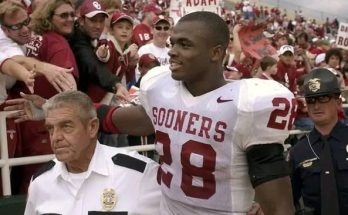From co-captains to division rivals, the story of Diane Weigl Stansberry is one of enduring legacy, competitive spirit, and a full-circle moment that underscores just how small and intertwined the sports world can be.
Years ago, Diane Weigl and her now-rival stood shoulder to shoulder as co-captains of a championship-winning collegiate team. They weren’t just teammates. They were leaders, motivators, and driving forces behind a group of women who made history at their university. Their bond wasn’t merely built on shared victories and grueling practices—it was forged in the fires of pressure-packed seasons, long travel days, and the countless behind-the-scenes sacrifices that define elite athletes.
In those days, their dynamic was built on mutual respect and a shared goal. They understood each other without having to speak. Diane, known for her relentless work ethic and razor-sharp focus, brought a methodical steadiness to the locker room. Her co-captain, charismatic and fiery, was the vocal heartbeat of the squad. Together, they were a perfect complement, balancing composure and passion, grace and grit.
After college, life took them in different directions. Diane pursued coaching and development, building a reputation as a sharp mind with a knack for turning programs around. She didn’t chase the spotlight. Instead, she chased excellence. That chase led her up the ranks, and eventually to the professional level, where her leadership, integrity, and strategic vision opened doors that many thought were sealed shut.
Her former teammate took a different route, diving headfirst into front-office roles and eventually rising through the executive ranks in one of the league’s most storied franchises. There, she became a respected voice—innovative, unafraid to make bold moves, and unapologetically competitive. The very traits that made her a standout captain translated seamlessly into building rosters and defining a franchise identity.
And then, it happened. A league expansion. New teams. New opportunities. And just like that, Diane Weigl Stansberry was named general manager of one of the league’s newest franchises. It was a long-overdue acknowledgment of everything she had built, the battles she had fought, and the legacy she was still determined to write.
Her introductory press conference felt like a culmination of a journey—but in truth, it was only the beginning. As reporters buzzed with questions, one asked about her former co-captain, now a rival GM in the same division. Diane smiled. It was a knowing, respectful smile—part nostalgia, part steel. “It’s funny how life works,” she said. “We built something special together once. Now we get to build something else—apart.”
The first matchup between their teams was electric. The build-up was unlike any regular-season game. Headlines wrote themselves: “From Teammates to Tacticians,” “The Co-Captain Showdown,” “Best Friends. Fiercest Rivals.” Yet, both women downplayed the hype publicly. Privately, they knew what it meant. The bond forged years ago remained, but now it lived inside a crucible of competition, where mutual respect would manifest not in words, but in game plans, signings, and sideline poise.
On game day, the energy in the building was different. Cameras tracked every gesture, every glance. There was a pregame handshake—a brief moment, barely longer than a heartbeat. But those who knew them, those who watched them lead together years ago, understood what it carried. It was a bridge between past and present, unity and rivalry, memory and ambition.
Their teams played like their personalities. Diane’s squad was disciplined, fluid, and surgically precise—every possession felt like a move in chess. Her opponent’s team? Fiery, aggressive, and relentless. A mirror image of the woman leading them. The game went to overtime. Then double overtime. It ended on a buzzer-beater that had fans leaping out of their seats, but neither GM flinched. They had seen bigger moments. They had lived them. But as Diane walked across the court to shake hands after the loss, there was a quiet pride in her eyes. It wasn’t just about the scoreboard. It was about the stage they had helped build—for themselves, for their players, and for the game.
As the season went on, the rivalry deepened. Every matchup became must-watch television. Not just because the games were tight, or the stakes were high, but because people were drawn to the larger story: two pioneers who once shared a dream, now shaping the future from opposite sides of the battlefield.
But this was never about bad blood. This wasn’t drama for drama’s sake. If anything, it was the ultimate tribute. To push each other, to compete against one another, was to show how far they had come. Their rivalry wasn’t rooted in resentment. It was rooted in reverence.
Off the court, they remained quietly supportive of each other. Never publicly, never loudly. But insiders would say that Diane would often send a short message after a big win by her former teammate. Just a thumbs-up emoji. Or a single word: “Respect.” And when Diane landed a major free agent, her phone would light up with a text that read, “Saw that. Big-time.”
In interviews, both women were careful not to dwell too much on their history. They didn’t want to be reduced to just a feel-good story. They were building legacies—real ones—on their own terms. But every now and then, when pressed, Diane would offer a glimpse behind the curtain. “We pushed each other then. We push each other now. That’s what great teammates do.”
What made their story even more compelling was how they influenced the broader landscape. Their rivalry sparked national conversations. Not just about wins and losses, but about leadership, representation, and what it means to evolve from players to executives in a world still catching up to the idea that women belong in every corner of sport.
Young athletes watched and took notes. Coaches pointed to Diane Weigl Stansberry as an example of how to lead with humility and determination. Her journey inspired not just those in the stands, but those behind the scenes—trainers, scouts, interns—who saw in her a roadmap for what’s possible when you refuse to compromise your principles.
The league, for its part, leaned into the narrative. It became a cornerstone of media campaigns, ticket promotions, and highlight reels. But at its core, this wasn’t a storyline manufactured for views. It was a living, breathing legacy.
As the playoffs approached, both teams remained in the hunt. A potential postseason clash loomed—a winner-take-all moment that felt almost too perfect. The league couldn’t have scripted it better. But again, Diane refused to get caught up in theatrics. “We’re not here for storylines,” she said. “We’re here to win.”
And yet, everyone knew. If the brackets aligned and these two teams met under the playoff lights, it would be about more than basketball. It would be about a journey that began in college dorm rooms and early morning practices, shaped by sweat, sacrifice, and shared dreams. It would be about the long road from co-captains to division rivals. About two women who chose different paths but carried the same fire.
Diane Weigl Stansberry may not seek the limelight, but she commands it. Her steady hand, sharp mind, and unwavering principles have made her a formidable figure in the sport. She isn’t just making history—she’s rewriting it, in real-time, alongside someone who once stood beside her in triumph and now stands across from her in battle.
Whatever happens next, the legacy is already secure. Because some rivalries are born in bitterness, but the best ones? The ones that captivate hearts and inspire futures? They’re born in brotherhood—or in this case, sisterhood. Built not on division, but on shared beginnings, mutual growth, and the belief that iron sharpens iron. From co-captains to division rivals, Diane Weigl Stansberry’s story isn’t just about where she’s been. It’s about where she’s going—and who’s right there with her, step for step, on the other side.



